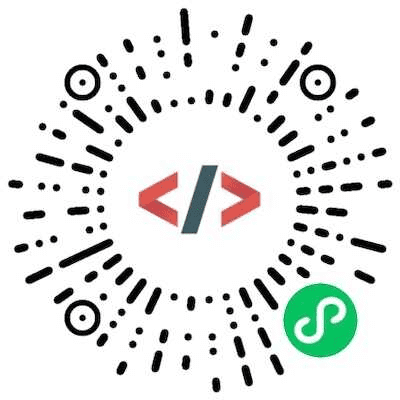第3课_常用Spring注解应用
热度🔥:94 免费课程
授课语音
Spring注解的分类与常用注解的应用
Spring框架通过大量的注解(Annotation)简化了配置和代码的复杂性,极大地提高了开发效率。本课件将讲解Spring注解的分类及其常见注解的使用。
1. Spring注解的分类
Spring中的注解主要可以分为以下几类:
- 核心配置注解:用于标识Spring应用程序中的核心组件。
- 依赖注入相关注解:用于实现Spring的依赖注入(DI)功能。
- 事务管理注解:用于配置和管理事务。
- Web相关注解:用于Web层开发,如控制器、请求映射等。
- AOP相关注解:用于切面编程和日志管理等功能。
2. 常用的Spring注解
2.1 核心配置注解
@Configuration:标识该类为Spring配置类,相当于applicationContext.xml配置文件。@Component:用于标识一个类为Spring管理的组件。@Bean:用于在配置类中定义一个Bean,通常结合@Configuration使用。
代码示例:@Configuration与@Bean的使用
import org.springframework.context.annotation.Bean;
import org.springframework.context.annotation.Configuration;
@Configuration // 标识该类是Spring的配置类
public class AppConfig {
@Bean // 将此方法返回的对象注入到Spring容器中
public MyService myService() {
return new MyServiceImpl();
}
}
解释:
@Configuration:表示AppConfig类是一个Spring配置类。@Bean:定义了一个名为myService的Bean,返回类型为MyService接口的实现类。
2.2 依赖注入相关注解
@Autowired:自动注入Bean。@Qualifier:与@Autowired配合使用,指定注入哪个具体的Bean。@Value:注入基本类型或字符串属性的值。
代码示例:@Autowired与@Qualifier的使用
import org.springframework.beans.factory.annotation.Autowired;
import org.springframework.beans.factory.annotation.Qualifier;
import org.springframework.stereotype.Component;
@Component
public class MyController {
@Autowired // 自动注入依赖的Service
@Qualifier("serviceA") // 如果有多个候选Bean,通过@Qualifier指定注入哪个Bean
private MyService myService;
public void execute() {
myService.performService();
}
}
解释:
@Autowired:自动将MyService的实现注入到MyController中。@Qualifier:指定注入serviceA的Bean。
2.3 事务管理注解
@Transactional:表示该方法或类需要事务管理,自动进行事务的开启、提交和回滚。
代码示例:@Transactional的使用
import org.springframework.stereotype.Service;
import org.springframework.transaction.annotation.Transactional;
@Service
public class MyService {
@Transactional // 声明此方法需要事务管理
public void performTransaction() {
// 执行数据库操作,自动开启事务
// 如果出现异常,事务会自动回滚
}
}
解释:
@Transactional:声明performTransaction()方法需要事务支持,Spring会自动为该方法开启事务,并在方法完成后提交或回滚事务。
2.4 Web相关注解
@Controller:标识该类为Spring MVC控制器。@RequestMapping:映射HTTP请求到控制器方法。@RestController:结合@Controller和@ResponseBody,用于构建RESTful服务。@RequestParam:用于获取HTTP请求中的参数。
代码示例:@Controller和@RequestMapping的使用
import org.springframework.stereotype.Controller;
import org.springframework.web.bind.annotation.RequestMapping;
@Controller
public class MyController {
@RequestMapping("/hello") // 映射HTTP请求到此方法
public String helloWorld() {
return "hello"; // 返回视图名称
}
}
解释:
@Controller:表示该类是一个Spring MVC控制器。@RequestMapping("/hello"):映射/hello路径的HTTP请求到helloWorld()方法。
2.5 AOP相关注解
@Aspect:声明该类为切面类。@Before:定义一个前置通知,在目标方法执行前执行。@After:定义一个后置通知,在目标方法执行后执行。@Around:定义一个环绕通知,能够控制目标方法是否执行。
代码示例:@Aspect和@Before的使用
import org.aspectj.lang.annotation.Aspect;
import org.aspectj.lang.annotation.Before;
import org.springframework.stereotype.Component;
@Aspect // 声明该类是一个切面类
@Component
public class LoggingAspect {
@Before("execution(* com.example.service.*.*(..))") // 在指定包下的所有方法执行前执行
public void logBefore() {
System.out.println("方法执行前的日志记录...");
}
}
解释:
@Aspect:声明LoggingAspect是一个切面类。@Before:定义一个前置通知,在目标方法执行之前输出日志。
3. 总结
Spring注解大大简化了Java开发中的配置与管理工作。常用的注解包括:
- 核心配置注解:
@Configuration、@Bean、@Component等; - 依赖注入注解:
@Autowired、@Qualifier、@Value等; - 事务管理注解:
@Transactional; - Web相关注解:
@Controller、@RequestMapping、@RestController等; - AOP相关注解:
@Aspect、@Before、@After等。
掌握这些注解的使用,能够帮助开发者更加高效地构建Spring应用,提升开发效率与代码可维护性。












